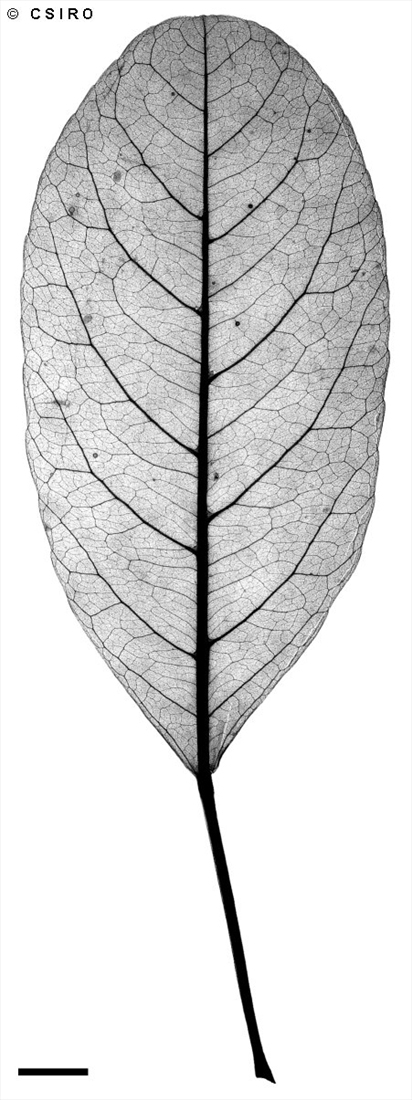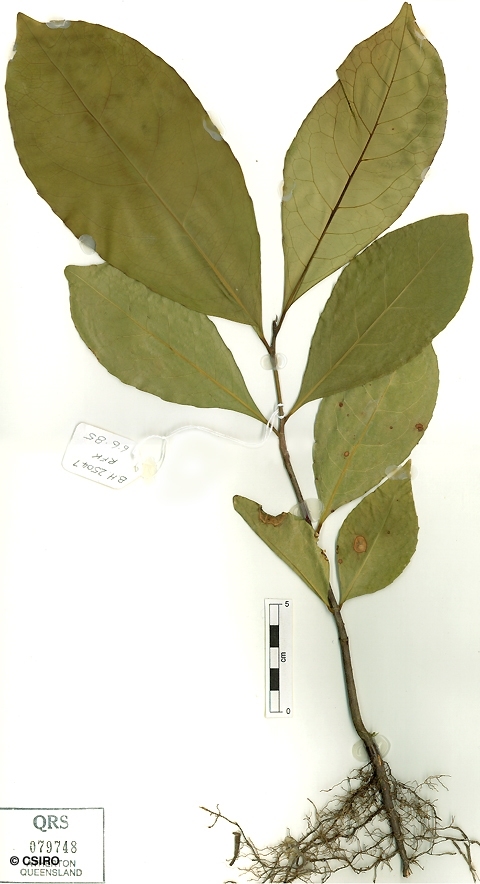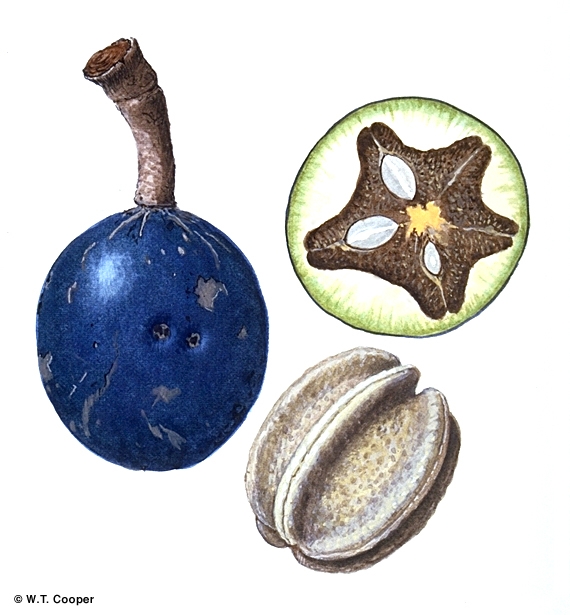Australian Tropical Rainforest Plants - Online edition
Elaeocarpus stellaris L.S.Sm.
Click/tap on images to enlarge

Scale bar 10mm. © CSIRO

10th leaf stage. © CSIRO

Cotyledon stage, epigeal germination. © CSIRO

Fruit, side view, cross section and endocarp. © W. T. Cooper
Family
Smith, L.S. (1969) Contributions from the Queensland Herbarium 6: 3. Type: near Gregory Falls, 11 miles WSW. of Innisfail, Smith 5349 (holotypus, BRI.078262).
Common name
Quandong
Stem
Usually encountered as a small tree to 30 cm dbh but recorded to 50 cm dbh.
Leaves
Flowers
Fruit
Seedlings
Cotyledons oblong, about 30 x 10 mm. At the tenth leaf stage: leaf blade obovate, apex bluntly acuminate; margin crenate, teeth very fine, inconspicuous with a fine aristate apex, glabrous; stipules small, triangular and shed early. Seed germination time 134 to 157 days.
Distribution and Ecology
Natural History & Notes
Fallen fruit eaten by Cassowaries. Native rats chew through the thick endocarp and eat the seed. Cooper & Cooper (1994).
RFK Code
71
Copyright © CSIRO 2020, all rights reserved.

Web edition hosted at https://apps.lucidcentral.org/rainforest




